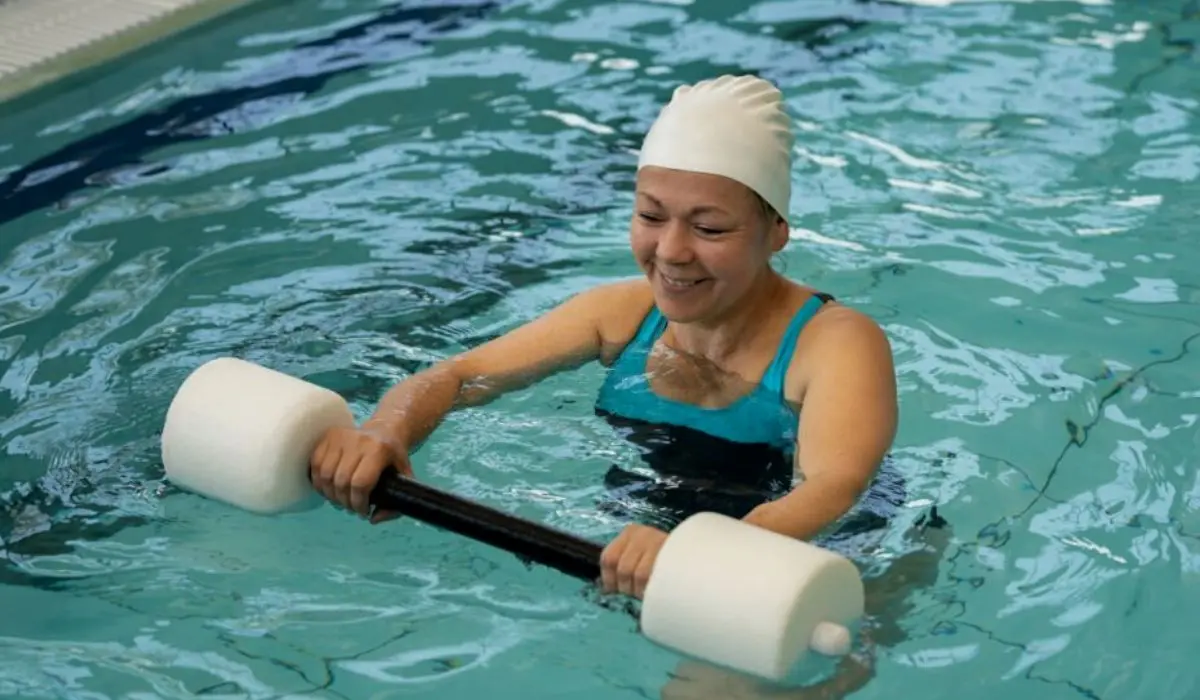Aquatic therapy has been known to be a form of sports rehabilitation that provides relief for athletes who have either been exposed to strenuous exercises or have sustained significant injuries. This type of sports rehabilitation therapy has also been known to work well for all types of neurologic and musculoskeletal injuries. The warm water utilized for treating the injured patients serves the goal of Aquatic Therapy, i.e., to relax the muscles, improve joint motion, and reduce pain. The above facts surrounding the nature and service of Aquatic Therapy will, no doubt, prove helpful for every injured athlete regardless of their specialization in any area of sports.
What Is Aquatic Therapy?
Hydrotherapy as it is otherwise called, Aquatic Therapy, as mentioned earlier, involves any treatment conducted in water to facilitate rehabilitation and recovery for people who have sustained serious injuries from sports-related activities. It could be highly assumed from here that those who have gone through strenuous or hard exercises can also be relieved from aquatic therapy. While this therapy carries specific goals as stated above, it is sure to prove effective for every individual regardless of whether they are athletes or not.

The traditionality associated with aquatic therapy, and with a history dating back to thousands of years makes it a highly preferable form of treatment to treat severe musculoskeletal and neurologic injuries, not only for athletes, but also for people from any walk of life.
Effectiveness Of Aquatic Therapy In Treating Injured Athletes
Aquatic Therapy benefits the injured athletes no matter whichever sports activities they are engaged in. Noting that this therapy works to provide sports rehabilitation, it can be reasonably added here that the unique environment offered here promotes normal movement patterns and strength building in the early phase/course of its treatment.
Since water is the prime mode of treatment/rehabilitation provided in this therapeutic setting, the remarkable changes that one can experience in one’s pain, aches, and sprains begotten from sports-related injuries can be visibly felt from the relief they experience when subjected to therapy. Of note, the reduced risk of further injury following the treatment adds to the many benefits associated with Aquatic Therapy.
One can also vouch for the effectiveness of this therapy by realizing that it happens to be the single option for rehabilitation when every other land-based therapy program has failed. With all this being stated, it would be good enough to note the many other advantages that Aquatic Therapy has to offer for the injured sportsmen in the upcoming section.
Advantages Of Aquatic Therapy For Injured Athletes
The benefits associated with Aquatic Therapy are related to the following features as listed below:
1. Effects of the physical properties of water
These relate to the buoyancy and viscosity one experiences and the relative relief derived from each of these properties.
- Buoyancy: The direct effect or buoyancy that can be experienced when a sportsperson immerses himself/herself in the warm water of the pool. Of note, this buoyance results in relief from the injury.
- Viscosity: This is the indirect effect and the resultant relief derived depends on the frontal surface of the pool and the speed at which one moves in the water. The mechanism behind this involves the surface area of the water one is immersed in, though partially. If the area is larger, this increases the friction between the liquid molecules and those between the molecules and the submerged body/object. While this results in experiencing resistance to movement from all sides/planes, it also encourages a wider movement and opposition to the force/friction encountered.
- Joint Relief Experienced
It is the water depth that determines the level of relief an athlete can feel in his/her joints. Based on the intensity of the pain experienced from the injury, the depth of the water can be adjusted to immerse the affected body parts to attain maximum relief. Again, varying depths can be chosen for various movements, such as running, hopping, and jumping. The depth adjustments are made to ensure that there is no overloading happening in the process of recovery.
- Muscle Strengthening Through Viscosity
Athletes, especially those injured in sports can notice three major advantages associated with water-based muscle-strengthening exercises. These remarkably include:
- Accommodating Resistance: The applied force when being in water achieves the same level of response from the resistant force.
- Variable Resistance: This refers to the variable speed of movement one can commit to when experiencing the force within the water. This results in gaining functional improvement of the body part affected.
- Freedom of movement: Muscle strengthening exercises in water can resemble natural movement. This is because the muscles experience the same level of freedom as allowed by the joints unlike the training equipment, which allows for fewer.
What Are The Risks Associated With Aquatic Therapy?
Some of the risks related to the therapy have been identified as follows:
- Drowning
- Heat Exhaustion
- Fall/Slip
- Infection
- Electric Shock
If water exercises are properly managed, these can prove highly hazardous for both the patients and the physical therapy staff. The after-effects can even adversely impact the other stakeholders involved in Aquatic Therapy, namely the carers, the domestic and estate staff, the patient, and the trust.
Read More:- Functional Movement Assessment In Physical Therapy – Quick Guide!
Conclusion
Though Aquatic Therapy though consists of ample benefits as were discussed above, is not, however, spared of the risks underlying there. With these being listed in the previous section, these strictly call for optimal management of the therapy and also require appropriate skill levels from every concerned department. Unless effectively carried out, this type of rehabilitation therapy will not provide the desired outcomes.